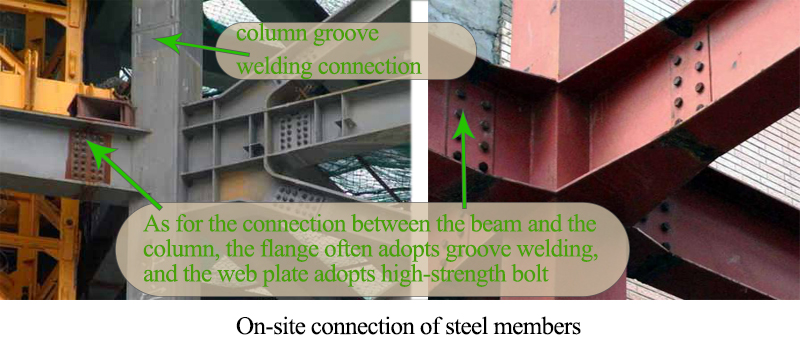Fastener connection of steel structure
- 08 Oct 2019
- steel structure
1. steel structure connection
Steel members are connected by welding, fastener connection (bolt connection, nailing, self-tapping, rivet) and riveting connection.
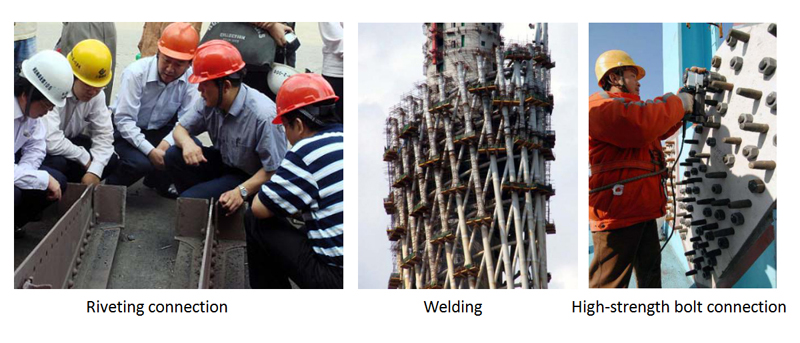
2. fastener connection project
As the connection fasteners of steel structure, bolts are commonly used for connection, fixing, positioning between steel members. The connecting bolts in the steel structure are generally divided into ordinary bolts and high-strength bolts. The connection between ordinary bolts or high-strength bolts without a tightening force is a ordinary bolt connection; the connection of high-strength bolt with a fastening force to the bolt is called a high-strength bolt connection.
2.1 Ordinary bolt connection
Steel structure Ordinary bolt connection is a connection form formed by connecting ordinary bolts, nuts, washers and connection pieces together.
Ordinary bolt construction requirements:
2.1.1 Connection requirements
2.1.2 Diameter and length selection
2.1.3 Bolt-up
2.2 High strength connection
High-strength bolt connection have developed into one of the main forms of connection together with welded steel structures. It has the advantages of good mechanical properties, fatigue resistance, good seismic performance, high joint rigidity and simple construction. It is widely used in construction site of steel structure building and bridge steel structure.
Based on the force condition of high strength bolt, the connection can be divided into friction type connection, friction-pressure type connection, pressure type connection and tension type connection. Among them, friction type connection is the basic connection form widely used at present.
2.2.1 High-strength hexagon bolt
High-strength large hexagon bolt for steel structures are classified into 8.8 and 10.9 grades. One pair includes a bolt, a nut and two washers. The high-strength bolt connection pair should be manufactured in the same batch to ensure the torque coefficient is stable. The average torque coefficient of the same batch connection is 0.110-0.150, and the standard deviation of the torque coefficient should be no more than 0.010.
2.2.2 Tor-shear type high-strength bolt
One pair tor-shear type high-strength used for steel structure includes a bolt, a nut and a washer, which is suitable for friction-type steel structures connection.
3. Fastener connection
It includes fastening connection for ordinary bolts, high-strength bolts, nails, self-tapping screws, and rivets. The connecting bolts are divided into 8 grades, namely 3.6, 4.6, 4.8, 5.6, 5.8, 6.8, 8.8, 10.9S (such as 5.6S means the tensile strength is 500MPa, the yield ratio is 60%), and the latter two are high strength. Bolts, the rest are ordinary bolts.
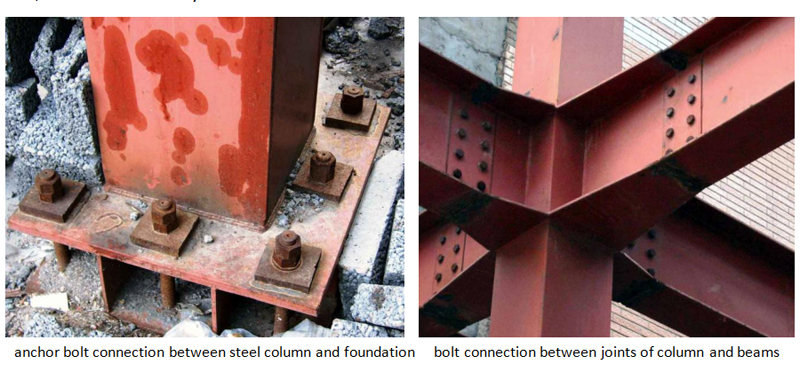
3.1 Ordinary bolt connection
3.1.1 Type and function of ordinary bolt
According to shape, ordinary bolt can be divided into: hexagon bolts, stud bolts and anchor bolts.
① Hexagon bolts: According to quality and grade, it can be divided into three types A, B and C.
Class A bolts - refined bolts;
Class B bolts - semi-refined bolts;
Class C bolts - thick bolts.
The A and B grade bolts are suitable for the installation of important structures that need to transmit large shear force at the joint. The C grade bolts are suitable for temporary fixing in steel structure installation.
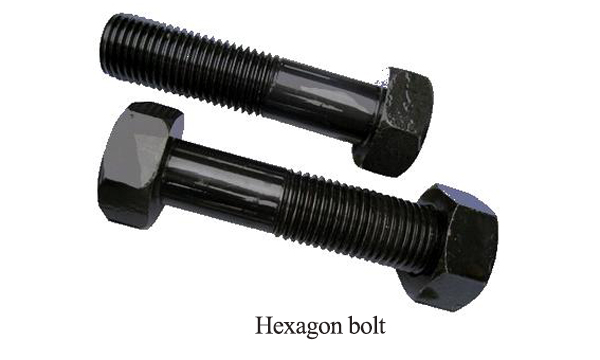
② Stud bolts, also known as studs, are often used to connect thick plates or places where it is not convenient to use hexagon bolts, such as roof trusses, roof girders, monorail girder suspensions, etc.
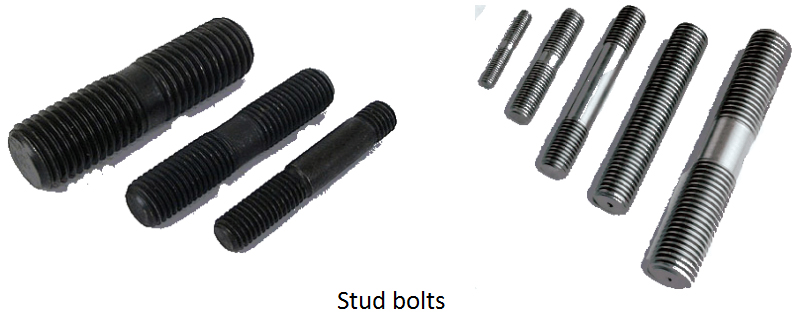
③ Anchor bolts: divided into general anchor bolts, right angle anchor bolts, hammer bolts and anchored anchor bolts. Generally, the general anchor bolts,right angle anchor bolts and hammer bolts are per-buried in the foundation before pouring. It is used to fix the steel column; the anchored anchor bolt is a kind of anchor bolt is installed and grouted after being formed into a hole on the formed raft foundation.
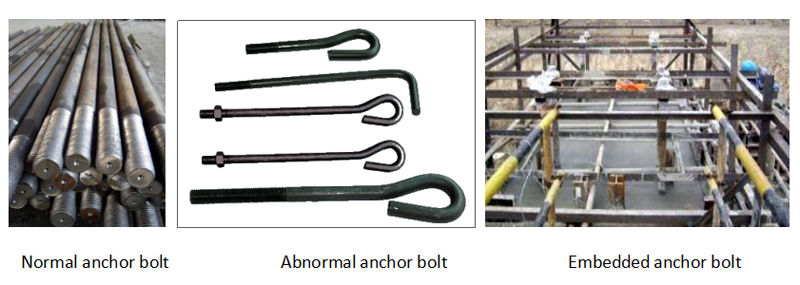
3.1.2 Ordinary bolt construction
① connection requirements:
A flat washer should be placed under the bolt head and nut. There should be no more than 2 washers under the nut, and no more than one washer under the bolt head.
The bolt head and nut should be in close contact with the surface of the structural member and the gasket.
The bolted joint of the inclined surface is placed with the inclined gasket pad flat.
For bolts of spring loads or important parts, spring washers should be placed.
The length of the bolt extension nut should not be less than the length of the two complete threads.
② Fastening axial force
The bolts must be tightened from the center and symmetrically twisted; the large joints are double-twisted, that is, the “two-fastening method".
The tightening axial force when applying the screw shall not exceed the corresponding regulations. The permanent bolt tightening quality inspection is carried out by hammering or using a torque wrench. It is required that the bolts are not vibrated and offset. The authenticity of the tightening is checked with a feeler gauge. The height difference (unevenness) of the butt joint should not exceed 0.5 mm.
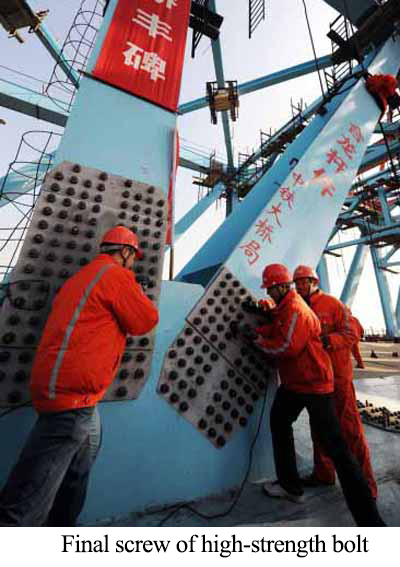
3.2 High strength bolt connection
3.2.1 Type and functions of high-strength bolt
High-strength bolts are bots with high-strength and are a standard part. It is a new steel structure connection type after riveting connection, which is the main steel structure connection means currently.
According to shapes, high-strength bolts can be divided into torsional shear type high-strength bolts and large hexagon head high-strength bolts.
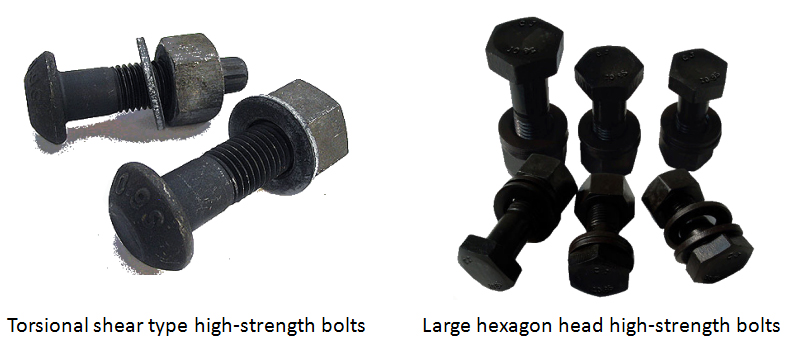
3.2.2Tools for high-strength bolt construction
① Manual torque wrench: When the high-strength bolt is manually tightened, it should be tightened with a wrench with the indicated torque value to achieve the torque and shear value specified by the high-strength bolt connection. There are three common used manual torque wrenches: pointer, acoustic and torsional type.
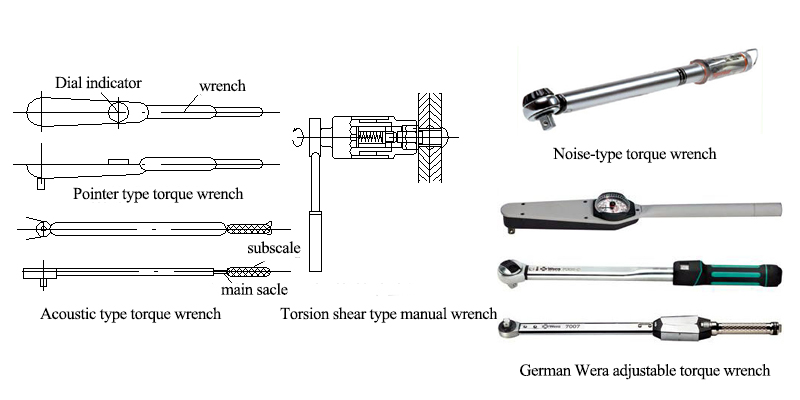
② electrical torque wrench
The fixed torque and fixed rotation angle electric wrench are suitable for the fastening of large hexagonal high-strength bolts, which can automatically control the torque and rotation angle. It is suitable for the initial and final tightening of large hexagonal high-strength bolts for steel structure bridges and workshop construction, as well as the initial tightening of torsional shear type high-strength bolts.
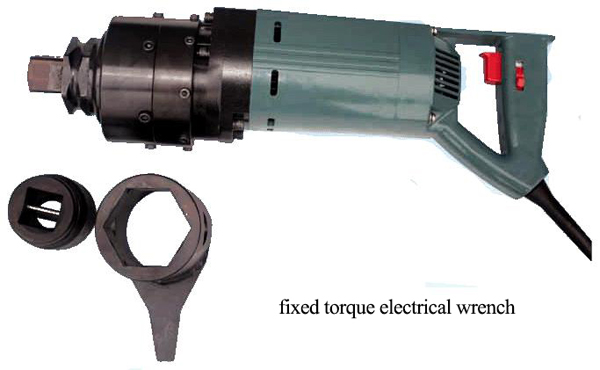
The torsional shear type electric wrench is suitable for the final tightening of the torsion shear type high-strength bolt. The commonly used torsional shear type electric wrench has two types: the 6922 type and the 6924 type.
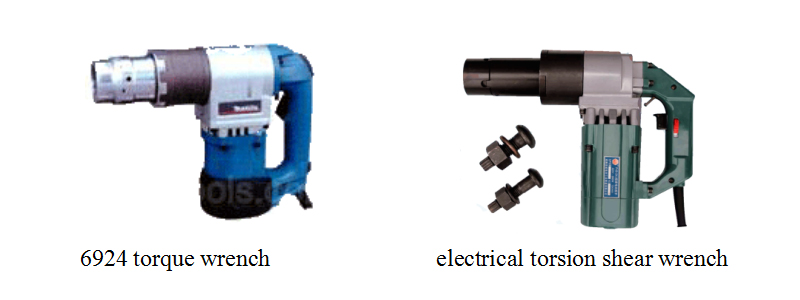
3.2.3 Storage and on-site re-inspection of high-strength bolts
① Storage of high-strength bolt
The packaging, transportation and on-site storage of high-strength bolts must be kept in the factory state, and it can be opened for inspection and use only before installation to prevent the torque coefficient (K) of the connecting pair from changing. This is an important part of the high-strength bolt storage.
② On-site sampling retest of high-strength bolts
Torsional shear high-strength bolts and high-strength hexagon head bolts shall be shipped with the test report of torque factor and tightening axial force (pre-tension).
Re-inspection of joint surface anti-slip coefficient: 3 test pieces high-strength bolts are taken for inspection from each batch;
Pre-tension re-inspection: 8 sets of torsion-shear high-strength bolts are taken for inspection from each batch;
Torque Coefficient Re-inspection: 8 sets of high-strength hexagon head bolts are taken for inspection from each batch.
3.2.4 high strength bolt construction points
① Checking before tightening
Before the bolt is tightened, the screw hole, the displacement of the connected piece, the unevenness, the non-perpendicularity, the tight fitting of the polishing top, and the treatment of the friction surface at the overlap of the plate, the connection gap, the concentricity of the hole, and the placement of temporary bolts all should be inspected.
② tightening construction
The tightening sequence should be performed in order from the center of the node to the edge. When tightening, it is necessary to divide the initial tightening and final tightening; for large nodes, it can be divided into initial tightening, double tightening and final tightening. The initial tightening and re-tightening axial force should be 60-80% of the standard axial force, and the final tightening axial force is the standard axial force.
The bolts installed on the day should be tightened out at the end of the day to prevent the threads from being stained and rusted and then causing the changing of torque coefficient value.
③ inspection after tightening
High-strength hexagon head bolt inspection: including missing tightening and construction torque values.
The inspection of the construction torque value was carried out within 1 hour or 48 hours after completion of the final tightening.
The amount of random inspection: 5% of each operation team and the number of final tightening per day, the number of unqualified ones should be less than 10% of the number of random inspections, and less than 2,then it will be qualified. Otherwise, you should double checking. If it is still unqualified,all the bolts that have been tightened out at the end of the day should be re-inspected.
For the inspection of torsion shear type high-strength bolt, as long as the tail is twisted off, it can be judged that the final tightening of bolt is qualified. For some reasons, if you can't use the special electric wrench to finally unscrew the plum head,please refer to the inspection method of high-strength hexagon head bolt, then the final tightening and marking can be carried out by the torque method or the angle method.
3.3 Self-tapping bolts, steel rivets, nail connections
The specification and size of Self-tapping bolts, steel rivets, nails used for connecting the thin steel plate should be matched with the connecting steel plates. Tightly attached, and its space and edge distance should be in accordance with design requirements.
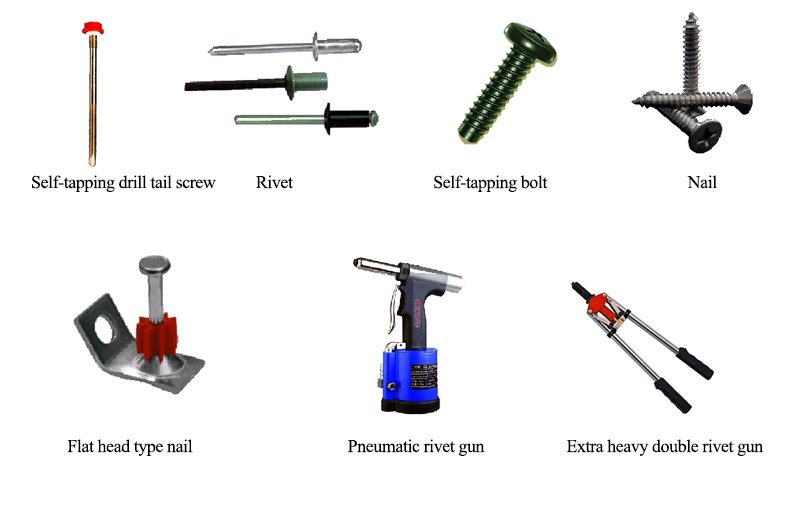
3.4 connection between steel members
The connection between the steel columns often adopts groove welding; As for the connection between the main beam and the steel column, the general flange often adopts groove welding, and the web plate adopts high-strength bolt. As for connection between the secondary beam and main beam,the web plate adopts high-strength bolt, and very few flange adopts groove welding.
